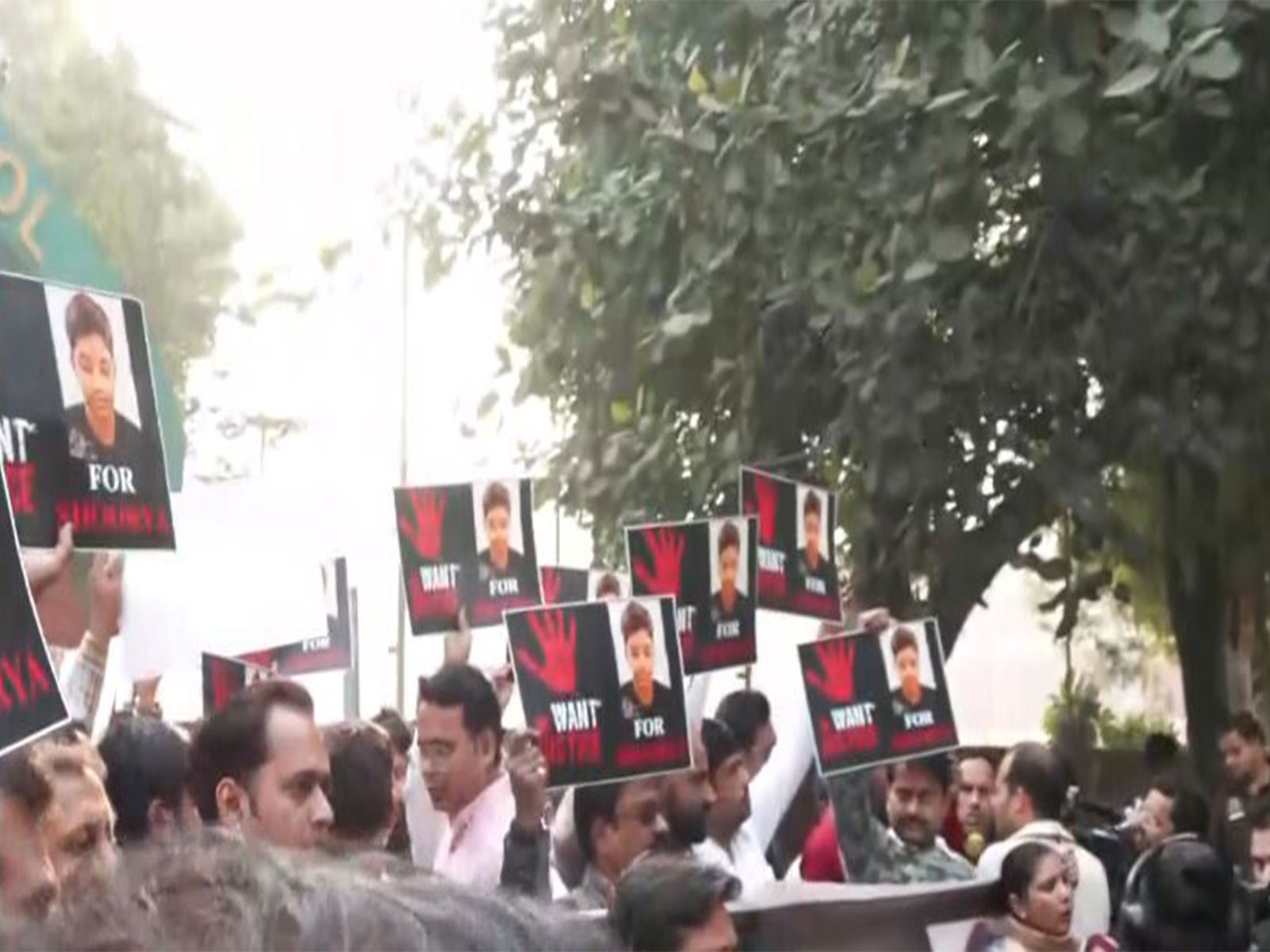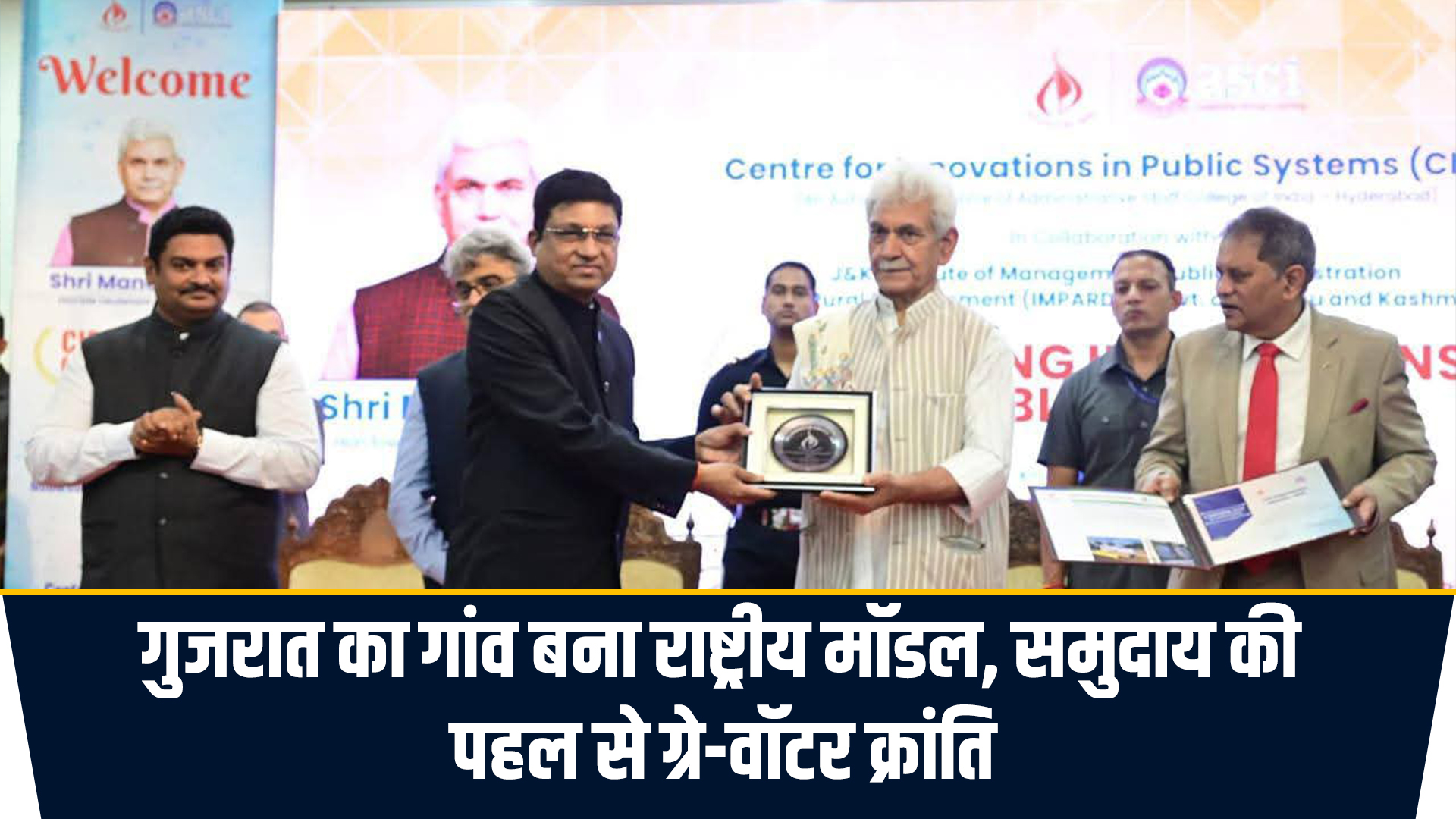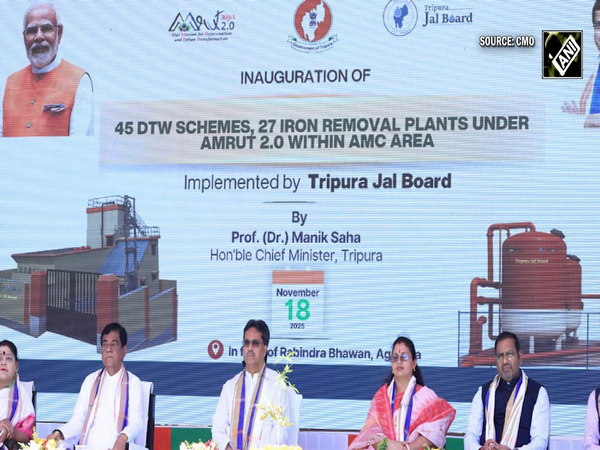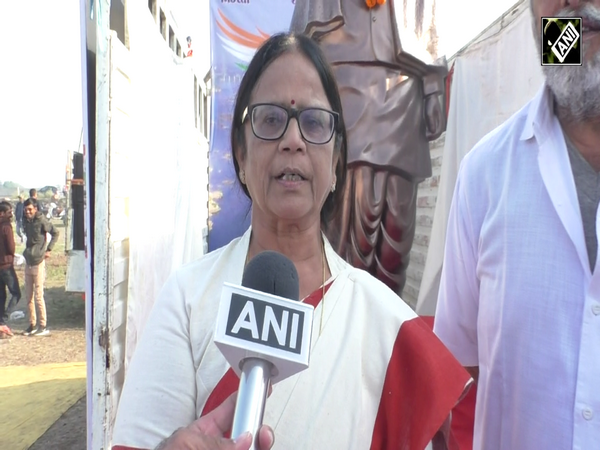UPA made economy non-performing, Modi government transformed it to be among 'top five': White Paper
Feb 08, 2024

New Delhi [India], February 9 : Noting that the UPA government inherited a healthy economy but made it "non-performing" in its 10 years, the White Paper brought out by the Finance Ministry states that the Modi government has bolstered macroeconomic foundations, revitalised financial sector, overhauled the credit ecosystem and transformed the quality of India's infrastructure.
The White Paper, tabled in Parliament by Finance Minister Nirmala Sitharaman on Thursday during the budget session, the last session ahead of Lok Sabha elections expected in April-May this year, compared the economic performance of 10 years of the Congress-led UPA government with that of the BJP-led government headed by Prime Minister Narendra Modi.
It said the UPA government's economic and fiscal mismanagement "had ultimately hollowed the growth potential of India by the end of its term."
"Since the time our government assumed power in 2014, the Indian economy has undergone many structural reforms that have strengthened the macroeconomic fundamentals of the economy. These reforms resulted in the transition of India from the league of 'Fragile Five' to the league of 'Top Five' in just about a decade as the economy was transformed into a far more resilient avatar amidst a challenging global environment," the paper said.
"In the past ten years, the government has revitalised the stagnant financial sector and overhauled the credit ecosystem within the economy, bringing about significant improvements," it added.
The paper said that the UPA government inherited a healthy economy ready for more reforms, but made it non-performing in its 10 years and that the UPA leadership, "which seldom fails to take credit for the 1991 reforms," abandoned them after coming to power in 2004.
"The UPA government, in its quest to maintain high economic growth by any means after the global financial crisis of 2008, severely undermined the macroeconomic foundations. One such foundation that was severely weakened by the UPA government was price stability," it said.
"The banking crisis was one of the most important and infamous legacies of the UPA government. The banking crisis in 2014 was massive, and the absolute sum at stake was too large. Gross advances by public sector banks were only Rs 6.6 lakh crore in March 2004. In March 2012, it was Rs 39.0 lakh crore. Further, not all problem loans were recognised...
"There was much under the hood. According to a Credit Suisse report published in March 2014, the top 200 companies with an interest coverage ratio of less than one owed about Rs8.6 lakh crore to banks. Nearly 44 per cent of those loans (Rs 3.8 lakh crore) were yet to be recognised as problem assets. That alone would have added another 6.7 per cent to the GNPA ratio," it added.
The paper said that in an era where capital flows dominate, India's external vulnerability shot up because of over-dependence on external commercial borrowings (ECB).
"The UPA government had compromised external and macroeconomic stability, and the currency plunged in 2013. From its high to low, against the US dollar between 2011 and 2013, the Indian rupee plunged 36 per cent. The famous Foreign Currency Non-Resident (FCNR(B)) deposit window for NRIs was actually a call for help when there was a large depletion of the foreign exchange reserves."
Under the UPA government, foreign exchange reserves had declined from around USD 294 billion in July 2011 to around USD 256 billion in August 2013. By end-September 2013, forex reserves were just enough to finance little over 6 months of imports, down from 17 months in end-March 2004, the paper said.
It said that the UPA government's response to the 2008 Global Financial Crisis - a fiscal stimulus package to combat the spill-over effects - was much worse than the problem it sought to address.
"It was way beyond the capacity of the Union Government to finance and sustain. Interestingly, the stimulus did not seem to bear any correlation with the outcomes it sought to achieve because our economy was not unduly affected by the crisis."
During the GFC, India's growth slowed to 3.1 per cent in FY09 but recovered swiftly to 7.9 per cent in FY10.
The paper said that under the UPA government, "public finances were brought to a terrible state, with a high fiscal deficit".
he special securities (Oil Bonds) in lieu of cash subsidy issued to the Oil Marketing Companies, Fertiliser Companies and Food Corporation of India by the UPA government totalled a little over Rs 1.9 lakh crore in the five years from FY06 to FY10, the paper said.
"Their inclusion in the subsidy bill for each year would have swelled the fiscal deficits and revenue deficits, but they were hidden. As a result of its fiscal mismanagement, the UPA government's fiscal deficit ended up being far higher than it had expected, and it subsequently ended up borrowing 27 per cent more from the market than what it had budgeted for in 2011-12. The fiscal deficit burden became too big to bear, for the economy...
"In the pretext of responding to the impact of the global financial and economic crisis the UPA government expanded its borrowing and did not relent at all. Not only did the UPA Government borrow heavily from the market, but the funds raised were applied unproductively."
The paper said there was a serious neglect of infrastructure creation, causing industrial and economic growth to stumble.
It said the Reserve Bank's reports also pointed towards excessive revenue expenditure by the UPA government.
"Poor policy planning and execution also resulted in large unspent funds for many social sector schemes during the UPA years. Across the 14 major social and rural sector ministries, a cumulative of Rs 94,060 crore of budgeted expenditure was left unspent over the period of UPA Government (2004-14), which amounted to 6.4 per cent of the cumulative budget estimate during that period...
"Health expenditure remained a pain point for Indian households under the UPA government. The fact that out-of-pocket expenditure (OOPE) comprised 64.2 per cent of total health expenditure (THE) of India in FY14 (with little improvement over 69.4 per cent OOPE as a percentage of THE in FY05) meant that health expenditure kept drilling holes in the pockets of the Indian citizenship...
"Such was the lack of consideration for long-term national development that even the critical issue of defence preparedness was hampered by policy paralysis. The UPA government's decade of governance (or its absence) was marked by policy misadventures and scams such as 2G scam & Coal Scam. The UPA government will always be remembered for the largest power outage in our history, in July 2012, leaving 62 crore people in darkness and putting national security at risk. Such darkness engulfed the nation, even as more than 24,000 MW of generation capacity lay idle due to a lack of fuels like coal and gas," the paper said.
It said India's telecom sector lost a precious decade due to the 2G scam and policy paralysis.
"In the UPA regime, the process of allocation of spectrum lacked transparency and was frequently misused in the years leading up to 2008-09, which resulted in the "2G scam". The 80:20 gold export-import scheme launched by the UPA government exemplifies how government systems and procedures were subverted to serve particular interests for obtaining illegitimate pecuniary gains. The UPA government's term was full of examples of policy paralysis."
It said the UPA government "could not establish any sense of common purpose, and there were wide inter-ministerial differences in the scope, purpose and implementation responsibilities."
"While investors across the world sought ease of doing business, the UPA government provided policy uncertainty and hostility. The demotivating investment climate under the UPA government led to domestic investors moving abroad.
It said Aadhar in India, a symbol of digital empowerment, too has suffered at the hands of UPA and a large number of development programmes and projects were implemented poorly.
"When Modi government assumed office, the economy was on a road to nowhere. The disconnect between India's policy planners and priorities for the country was so stark that the people gave an overwhelming mandate in the general elections of 2014 to the NDA to take charge of the reins. Out of 442 ongoing projects of Railways, the target for completion of projects was fixed for only 156 (35 per cent) projects. Delay in completion of projects resulted in cost overrun of Rs 1.07 lakh crore."
It said the Railway Board took an average of 43 months to sanction the bridgeworks after identifying for rehabilitation from a safety perspective, and even after that the bridgeworks were completed with an average delay of 41 months.
"The decade of the UPA government was a lost decade because it failed to capitalise on the strong foundational economy and pace of reforms left behind by the Vajpayee government. Time and again, there was a crisis of leadership in the UPA government. The UPA government's economic and fiscal mismanagement had ultimately hollowed the growth potential of India by the end of its term.
The paper said when the BJP-led NDA government took over in 2014, it recognized the urgent need to revamp and overhaul systems and processes, to help India advance on the path of development while also bolstering its macroeconomic foundations.
" Right from spearheading the digital revolution to the elimination of open defecation, and from successfully vaccinating the entire eligible population using indigenous vaccines to substantially diversifying exports, India has achieved remarkable milestones under our new governance paradigm...
"In parallel, we have also strengthened the health of the economy and the business sector. The foundation for a comprehensive reform process was laid in the initial years of our government. The initiation of the reform process started yielding positive results in the early years of our government, by improving the investor climate and creating a favourable outlook for the economy," the paper said.
It said the economic mismanagement choked the growth potential and India became a 'fragile' economy and the economy could only grow from being the 12th largest in 2004 to the 10th largest in 2014.
The paper said the BJP-led NDA government's vision of 'Nation First' has transformed the quality of India's infrastructure and logistics ecosystem, which will be key for the country to attract investments and expand its presence in global value chains.
It cited the increase in the pace of national highway construction and said that procurement of critical equipment for the defence sector, "not prioritised by the UPA government", has been emphasised by the government.
"Our Government understands the true spirit of balancing 'Prakriti' and 'Pragati' which was wholly missing in the regulations of 2011. The reform measures undertaken by our government have significantly elevated the medium-term investment prospects of the economy. Empowerment through welfare has been the leitmotif for our government. We adopted the philosophy of 'Sabka Sath, Sabka Vikas' prioritising universal access to basic amenities, and a participatory, mission actualising this philosophy....
"Our government has resolved the execution challenges that plagued the UPA government by implementing technology-based targeting and monitoring mechanism. Besides substantially improving upon the UPA government's programme delivery, our government also undertook several policy innovations to tap India's development potential," the paper said.
It said to tackle the enduring challenge of high inflation inherited from the UPA government in 2014, the BJP-led government strategically addressed the root cause of the problem by implementing responsible fiscal and monetary policies.
"Fiscal discipline undergirded the government's spending decisions. In 2016, the government gave the mandate to the RBI to target inflation in the band of 2 per cent to 6 per cent. Average annual inflation between FY14 and FY23 declined to 5 per cent from an average inflation of 8.2 per cent between FY04 and FY14. Our government has made concerted efforts to control the high external sector vulnerability inherited from the UPA Government."
It said that moving away from the past practice, below-the-line financing is now being transparently disclosed. "The market borrowings of the Central Government, which had grown at phenomenal rates during the UPA years, were controlled by our government."
The paper said that as a result of the NDA government's relentless efforts to clean the coal sector, coal production reached a record level of 893.19 MT in FY23, which is the highest in the history of India.
"Since 2014, our government has taken several steps to correct the situation in the telecom market and to effectively handle the failures that resulted from the lack of clarity in policy in the sector...The efficacy of all the measures is reflected in the increasing cumulative gross revenue of all telecom service providers, which has already crossed Rs 3 lakh crore," it said.















